You know the drill. You check in, the front desk agent gives you a big smile and says, “Because of your status, we’ve gone ahead and upgraded you to a larger room.” Nice! But how do you really know they aren’t just giving you the exact same room as everyone else, only with slightly more enthusiasm?
The Secret Weapon: The Fire Escape Map
There’s a surprisingly easy way to fact-check your “upgrade”: look behind your door. That humble fire escape map doesn’t just show you how to flee in case of an emergency—it quietly reveals the entire floor plan.
Take a look at the shapes of the rooms. Are they all carbon copies of each other? Are there just two that are larger, and you’re clearly not in one of them? Congratulations, you’ve just cracked the hotel’s little white lie.

Basic Brands = Subtle Differences
At limited-service chains like Hyatt Place or Wingate Inn, an “upgrade” might just mean a few extra feet of floor space, or a room that’s slightly deeper than average. It’s not a suite, just not the smallest room on the floor. But hey, in these types of hotels, we’ll take what we can get.
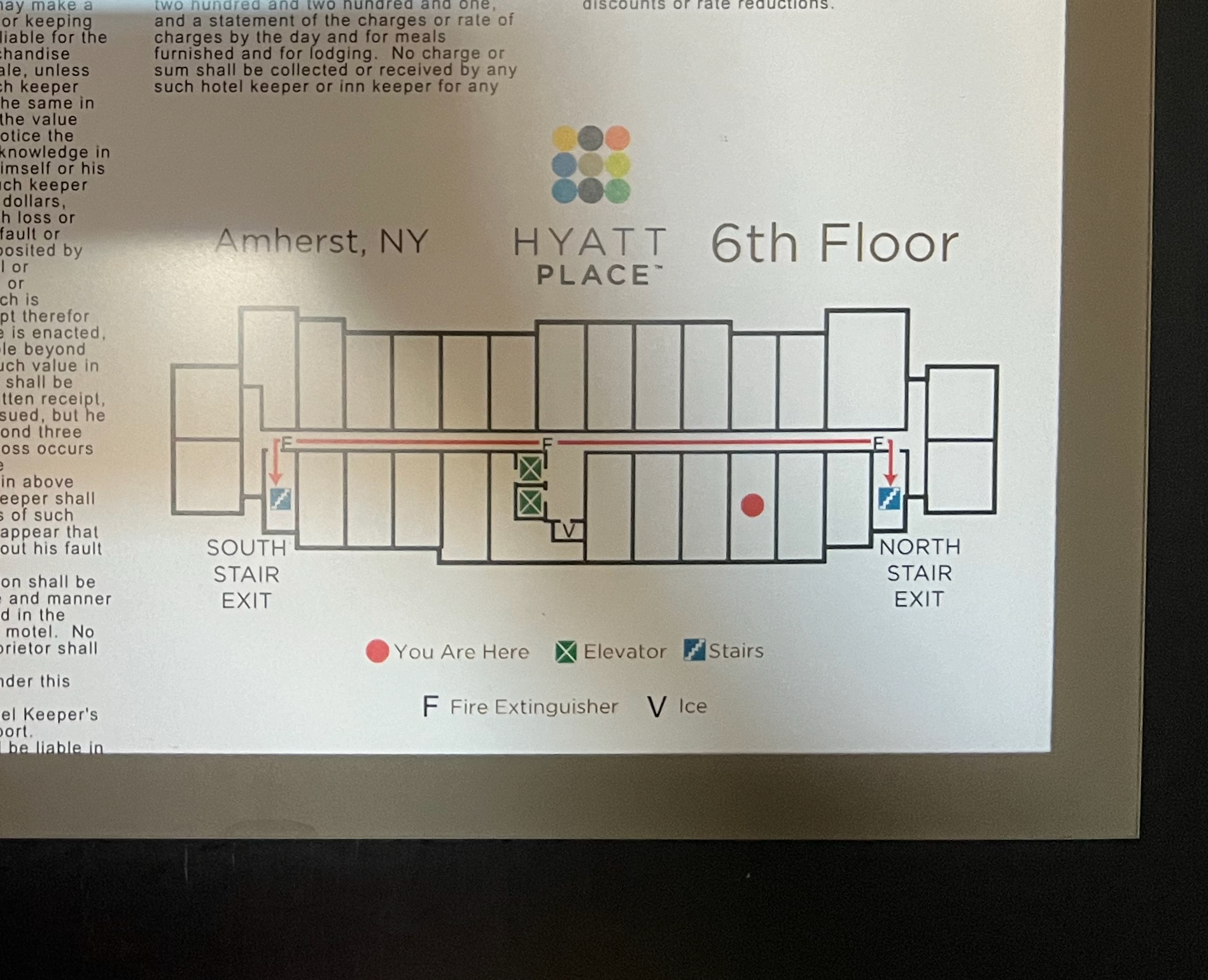
That said, even in these cookie-cutter properties, there can be small surprises. We’ve stayed at hotels where the rooms on one side of the hallway were slightly wider than those on the other side. If you’ve ever felt like your “upgrade” just meant your armchair had a little more elbow room, you might not be wrong.
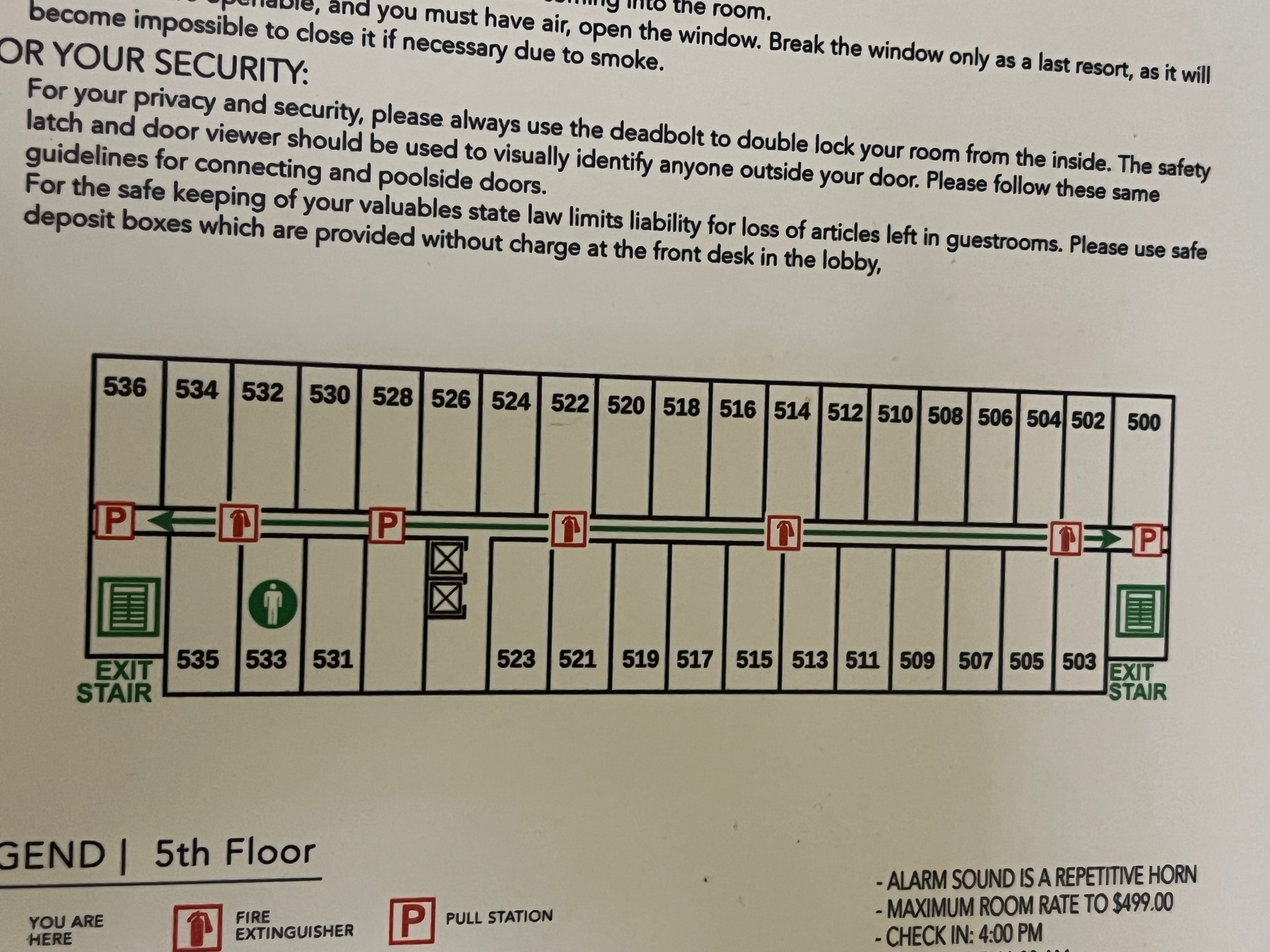
Quirky Hotels = Floorplan Chaos
Things get more fun (and more obvious) at hotels with less standardized design.
Take the Moxy Times Square in New York. We started out being assigned one of the rooms across from the elevator—arguably the smallest hotel room we’ve ever been assigned, at least in the U.S. Eventually we moved to one that was slightly bigger, but even a quick glance at the fire map showed us there were much larger rooms available, if you’re willing to pay Moxy’s version of luxury pricing.
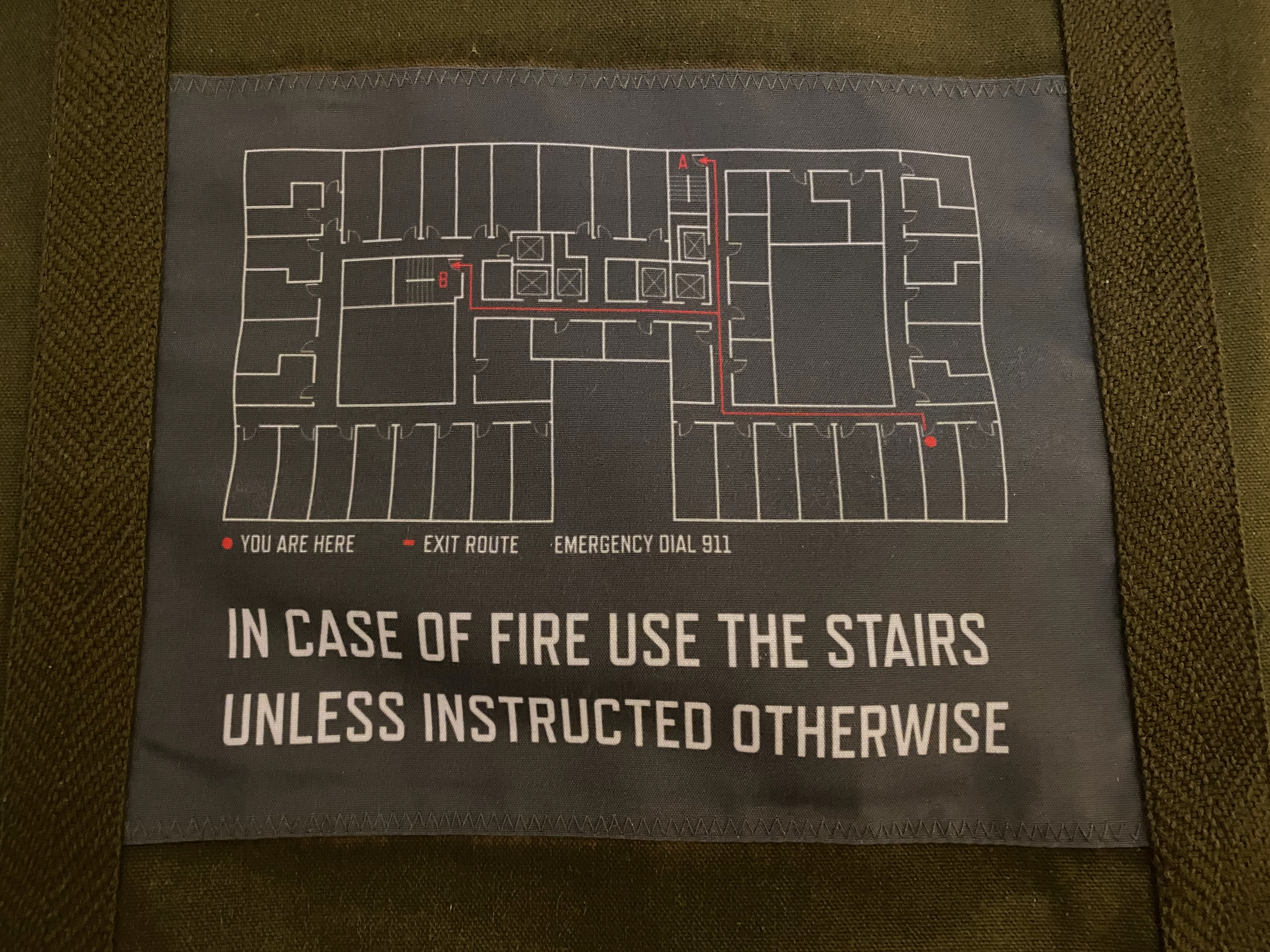
On the flip side, we actually did score big at the Aloft in San Juan. Our room was tucked at the end of the hall and had an angled wall, which gave us an unconventional layout and plenty of breathing room. It might not have been a suite, but we had enough space that we didn’t need to play suitcase Tetris. Fittingly, it was also the only time we were upgraded to a much larger room during all our years as Marriott Bonvoy Platinum. It was our final stay before dropping back down to Gold Elite—going out on a high note.
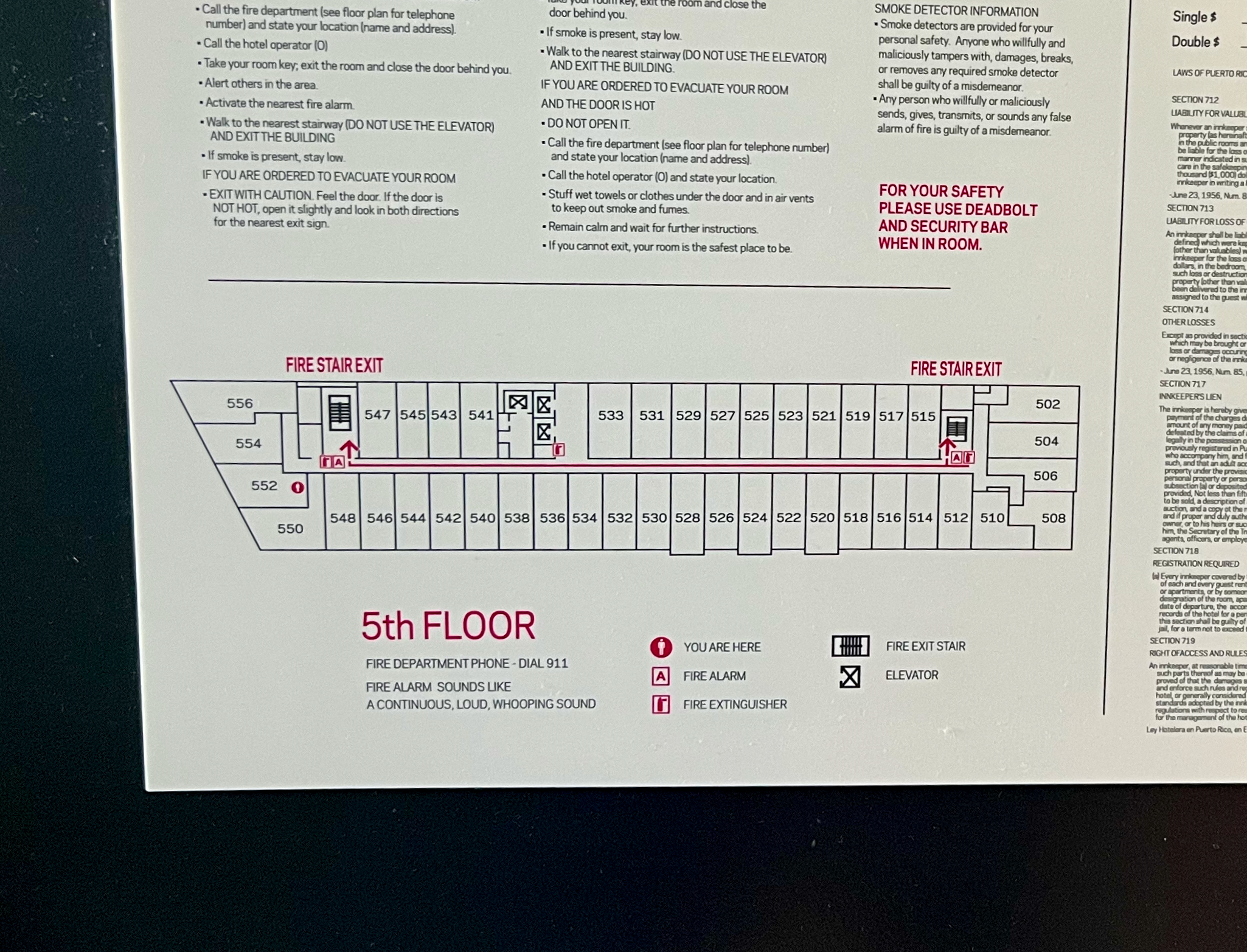
Even smaller hotels can show dramatic differences. At the Hotel Draper in New York, there were only a handful of rooms on each floor, but it was immediately obvious from the map that one room was significantly larger than the others. And it wasn’t ours.
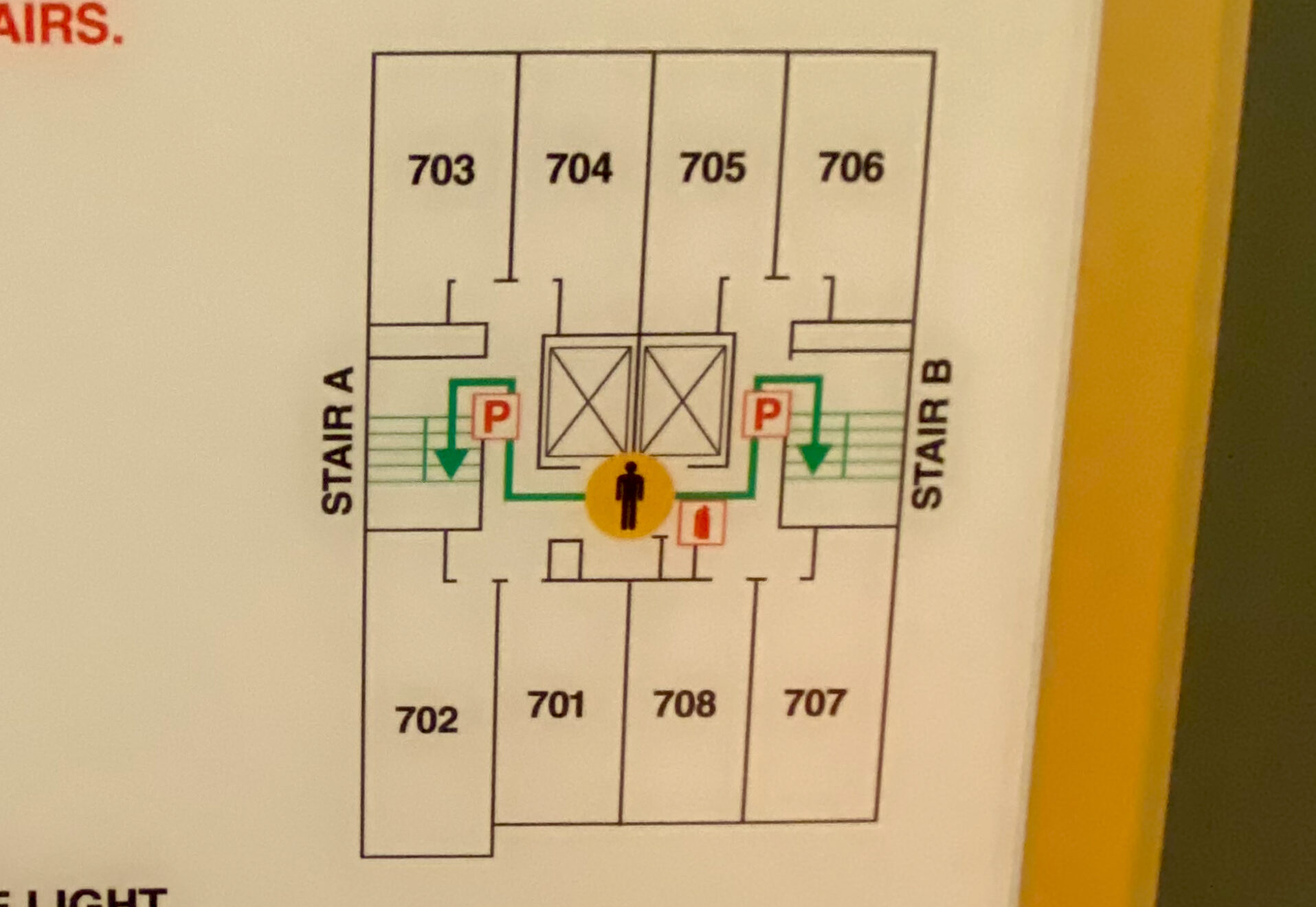
Then there are properties like Caesars Palace in Las Vegas. With multiple towers and a mix of room types—from basic standards to suites with Roman bathtubs and grand pianos—the floor plan is an architectural buffet. During a stay at Nobu Hotel, which is tucked inside Caesars Palace, we booked a standard room. It was more than comfortable for one person on a short trip, but according to the emergency map, we were still in one of the smaller layouts. Yes, even in the luxury segment, the room maps don’t lie.
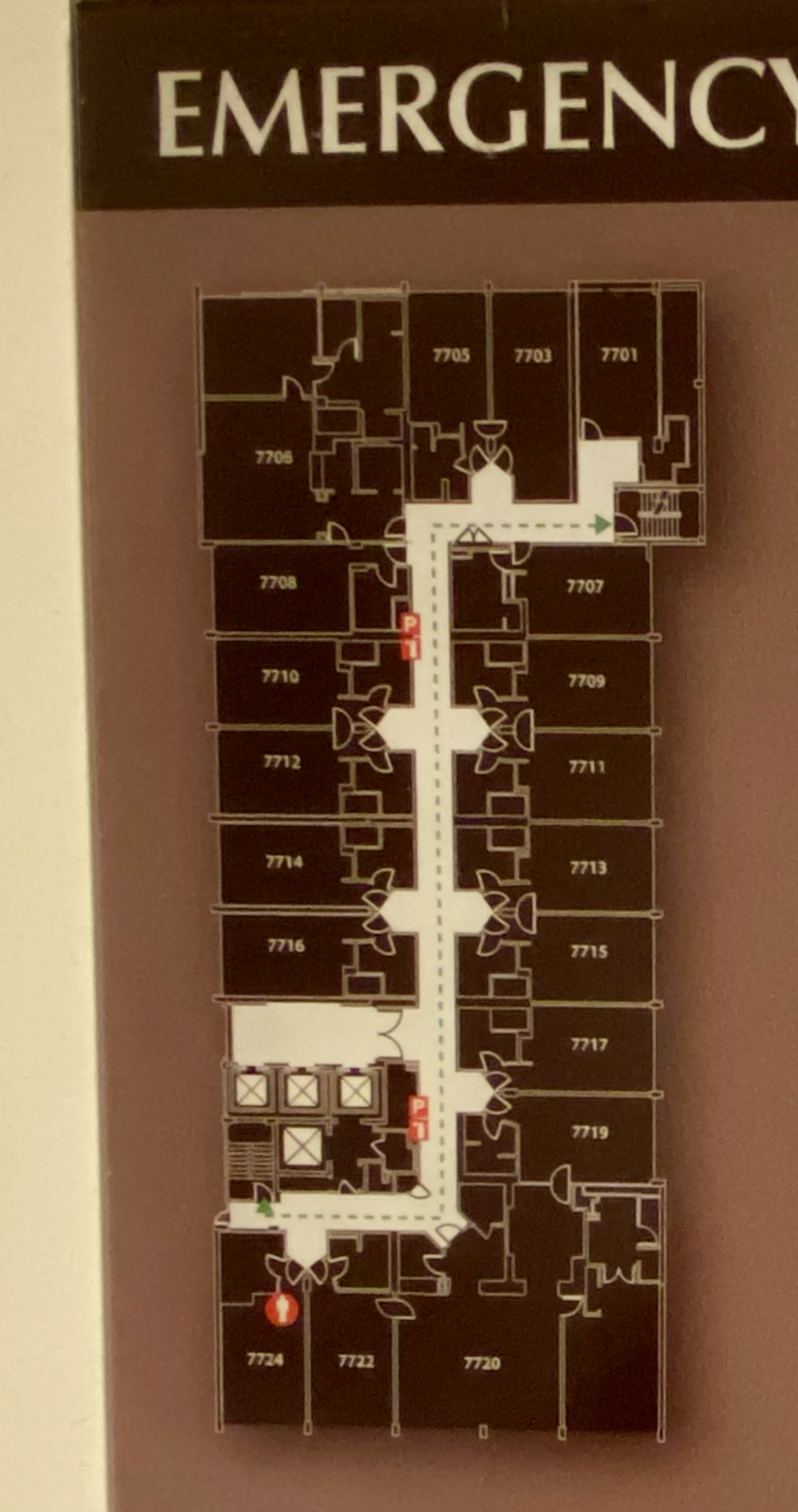
Bonus: The Maximum Room Rate Illusion
While you’re inspecting that map, don’t forget to marvel at the “Maximum Room Rate” they’re legally required to post in certain states. It might say your standard room is $999.99 per night. This means absolutely nothing—except maybe the hotel has a vivid imagination. Here’s why those max rates mean nothing.
Final Thought: Don’t Just Smile—Verify
So next time you’re told you’ve been “upgraded,” don’t take their word for it. Just turn around, check the back of the door, and let the map tell the real story. Because when it comes to hotel rooms, square footage speaks louder than check-in desk flattery.
Want to comment on this post? Great! Read this first to help ensure it gets approved.
Want to sponsor a post, write something for Your Mileage May Vary, or put ads on our site? Click here for more info.
Like this post? Please share it! We have plenty more just like it and would love it if you decided to hang around and sign up to get emailed notifications of when we post.
Whether you’ve read our articles before or this is the first time you’re stopping by, we’re really glad you’re here and hope you come back to visit again!
This post first appeared on Your Mileage May Vary
